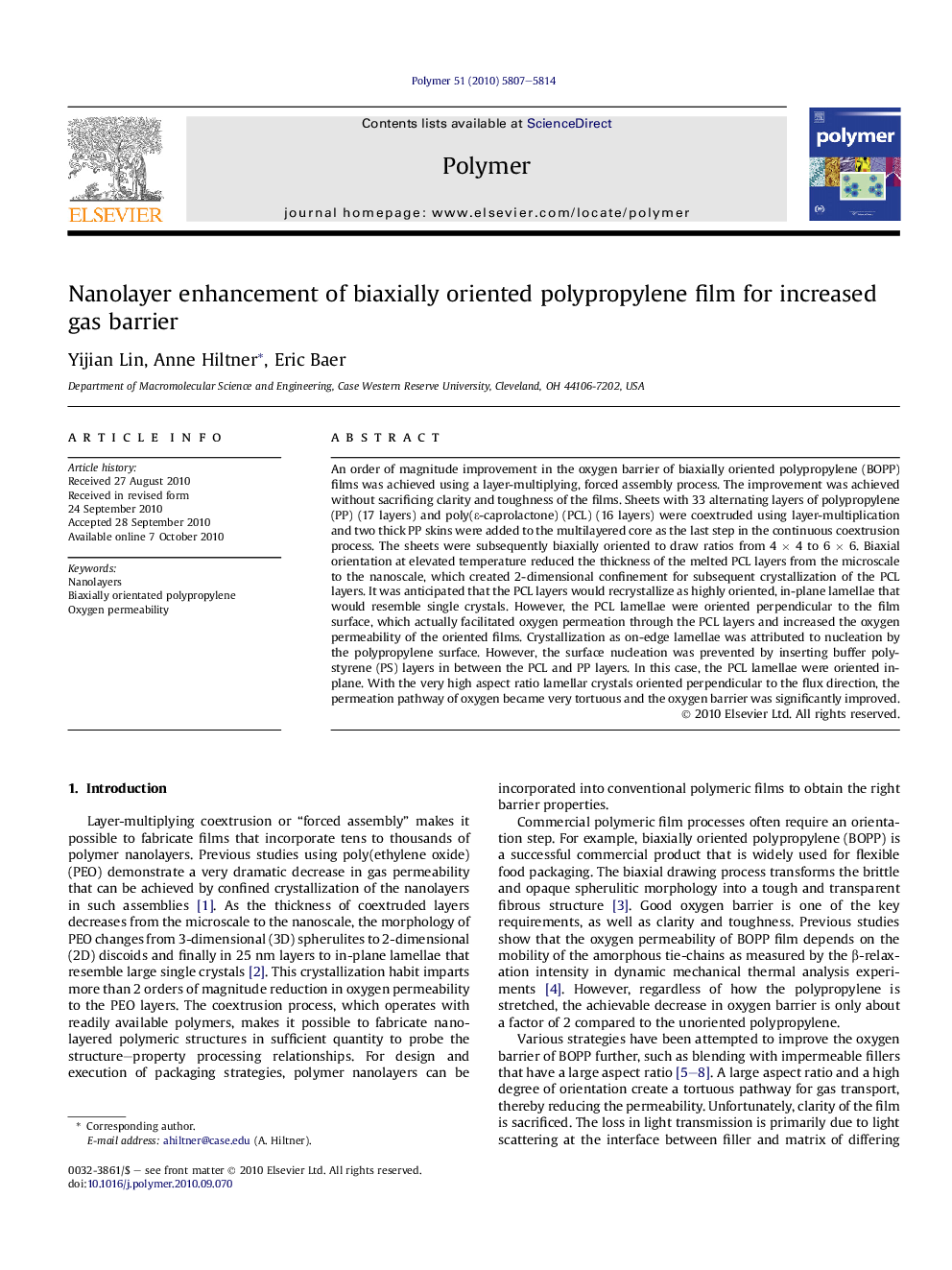| Article ID | Journal | Published Year | Pages | File Type |
|---|---|---|---|---|
| 5185171 | Polymer | 2010 | 8 Pages |
An order of magnitude improvement in the oxygen barrier of biaxially oriented polypropylene (BOPP) films was achieved using a layer-multiplying, forced assembly process. The improvement was achieved without sacrificing clarity and toughness of the films. Sheets with 33 alternating layers of polypropylene (PP) (17 layers) and poly(É-caprolactone) (PCL) (16 layers) were coextruded using layer-multiplication and two thick PP skins were added to the multilayered core as the last step in the continuous coextrusion process. The sheets were subsequently biaxially oriented to draw ratios from 4Â ÃÂ 4 to 6Â ÃÂ 6. Biaxial orientation at elevated temperature reduced the thickness of the melted PCL layers from the microscale to the nanoscale, which created 2-dimensional confinement for subsequent crystallization of the PCL layers. It was anticipated that the PCL layers would recrystallize as highly oriented, in-plane lamellae that would resemble single crystals. However, the PCL lamellae were oriented perpendicular to the film surface, which actually facilitated oxygen permeation through the PCL layers and increased the oxygen permeability of the oriented films. Crystallization as on-edge lamellae was attributed to nucleation by the polypropylene surface. However, the surface nucleation was prevented by inserting buffer polystyrene (PS) layers in between the PCL and PP layers. In this case, the PCL lamellae were oriented in-plane. With the very high aspect ratio lamellar crystals oriented perpendicular to the flux direction, the permeation pathway of oxygen became very tortuous and the oxygen barrier was significantly improved.
Graphical abstractDownload full-size image
